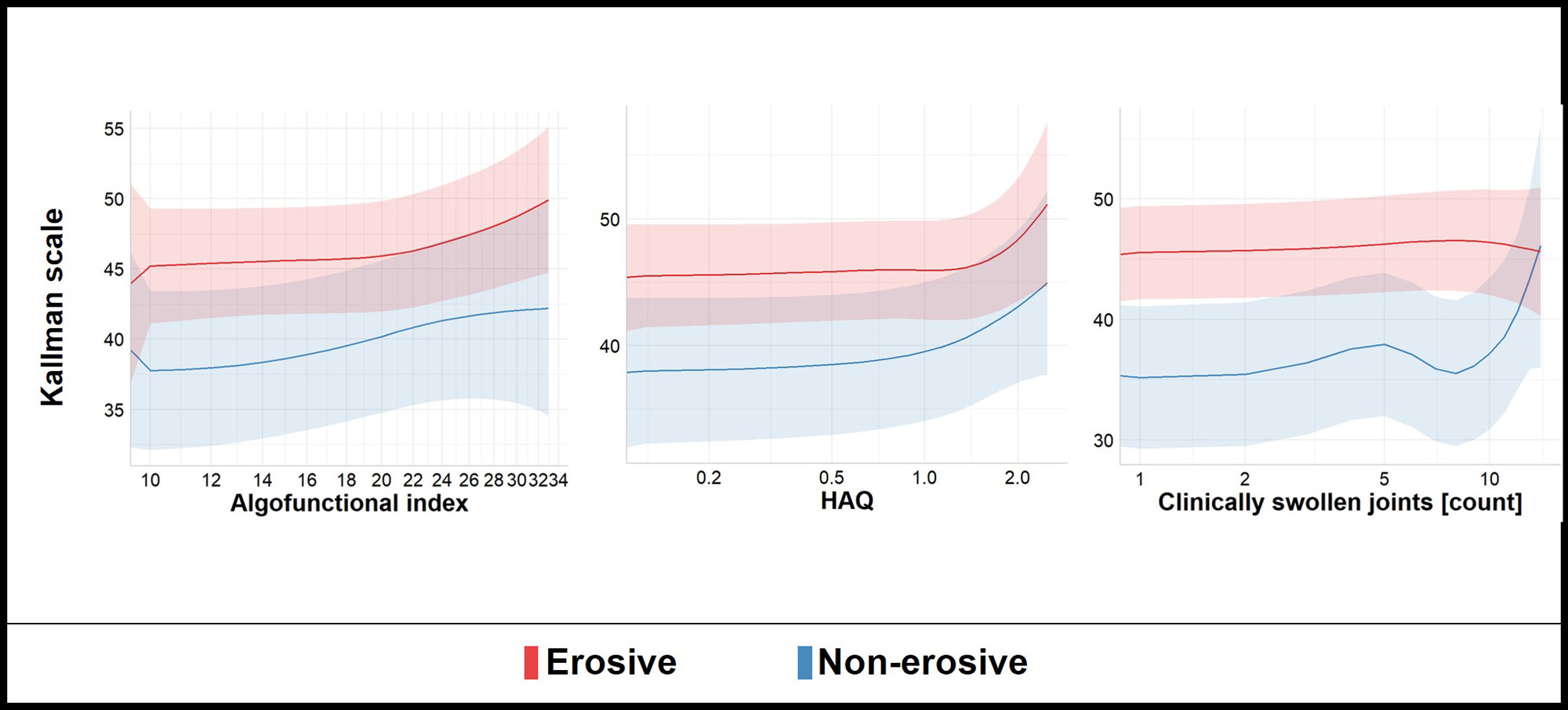Session Information
Session Type: Poster Session C
Session Time: 9:00AM-11:00AM
Background/Purpose: Hand osteoarthritis (HOA) is a heterogeneous disorder with two main subtypes, non-erosive and erosive. The progression of HOA is assessed by various radiographic scoring methods, including the Kallmann scale, and the understanding of the association between radiographic changes and clinical symptoms might help improve the monitoring of disease progression.This study aimed to investigate the association of the Kallman scale with clinical assessment parameters and the erosive subtype in a Czech population of HOA patients over 5 years.
Methods: Consecutive patients with symptomatic HOA fulfilling the American College of Rheumatology (ACR) criteria were included in this study. All patients were evaluated at baseline and follow-up examinations over 2 and 5 years. Clinical examinations were performed by qualified rheumatologists. The number of clinically tender and swollen joints was recorded. Pain, stiffness, and function were assessed. Hand disability was evaluated based on the Algofunctional index. The visual analog scale (VAS-pain) and the health assessment questionnaire (HAQ) was used for the assessment of pain and function/disability. Postero-anterior plain radiographs of both hands were examined, and radiographs were scored by two trained readers (rheumatologists) according to the Kallman scale.
Results: Of 154 patients enrolled in this study, 129 subjects (89.3% females; mean age at baseline = 64.6±8.0 years) met the ACR classification criteria for HOA and were followed up over 5 years at the outpatient department of the Institute of Rheumatology in Prague. Out of these patients, 57 were diagnosed with the non-erosive form (87.7% females; mean age at baseline = 63.8±7.7 years) and 72 with the erosive form (90.3% females; mean age at baseline = 65.7±8.1 years), where erosive HOA was defined by at least one interphalangeal joint with radiographic signs of erosion. Firstly, we analyzed each examination separately and found that the Kallman scale was both significantly increased in patients with the erosive subtype (2.95 – 3.12-fold, p< 0.001 for all) and associated with age in all examinations (β = 1.27 – 1.57; p< 0.001 for all). Next, we used generalized additive modeling (GAM) to analyze data collected over five years and discovered the association of the scale with HOA subtypes and age (p < 0.01 for both). GAM also revealed associations of the Kallman scale with HAQ (edf=2.5, p=0.016) in all patients and patients with non-erosive HOA (edf=1.7, p=0.027). Similarly, the scale was associated with the number of clinically swollen joints in all HOA patients (edf = 1, p = 0.041) and patients with non-erosive HOA (edf=4, p=0.046). Eventually, the Algofunctionalindex (edf=1.9, p=0.02) was only associated with the scale in all HOA patients. Other parameters (e.g., AUSCANs) were insignificant.
Conclusion: Our 5-year longitudinal study revealed the associations of structural progressions with both subtypes and age at each time point. In contrast, functional impairments were only associated with progression in the non-erosive subset and all HOA patients. Further studies in a larger cohort of patients are needed to validate these data.
Acknowledgments: This work was supported by MHCR 023728 and AZV No. 18-00542.
To cite this abstract in AMA style:
Sleglova O, Baloun J, Gatterova J, Svec X, Ruzickova O, Pavelka K, Senolt L. The Association Between X-ray Progression and Clinical Outcomes in Patients with Hand Osteoarthritis with 5-year Follow-up [abstract]. Arthritis Rheumatol. 2023; 75 (suppl 9). https://acrabstracts.org/abstract/the-association-between-x-ray-progression-and-clinical-outcomes-in-patients-with-hand-osteoarthritis-with-5-year-follow-up/. Accessed .« Back to ACR Convergence 2023
ACR Meeting Abstracts - https://acrabstracts.org/abstract/the-association-between-x-ray-progression-and-clinical-outcomes-in-patients-with-hand-osteoarthritis-with-5-year-follow-up/

